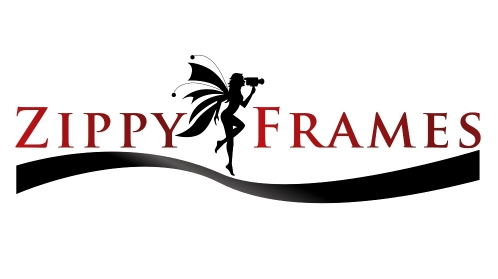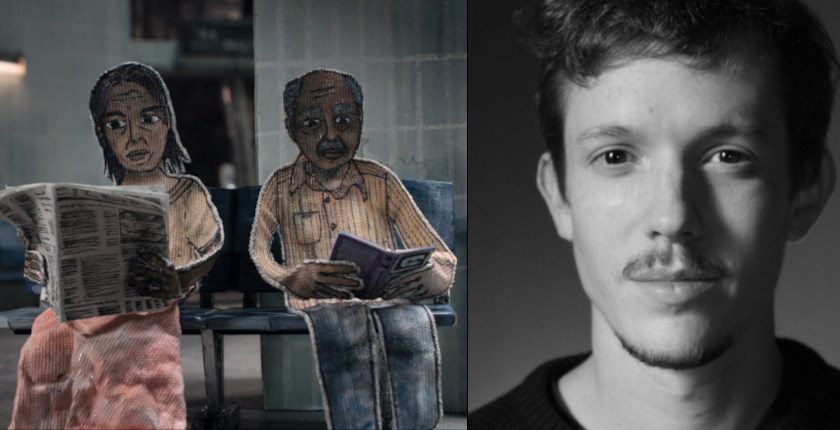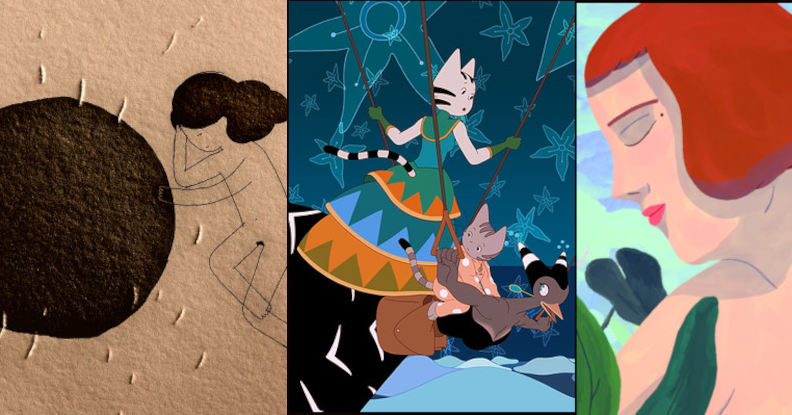Queerness is Blurring the Norms: Interview with Swiss Animation Director Milva Stutz (Swiss Focus @ ITFS 2025)
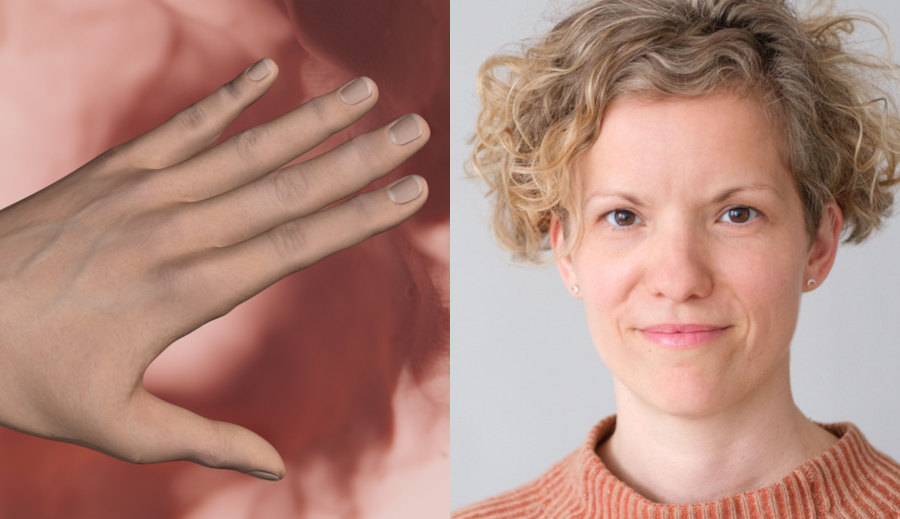
Swiss animation director and artist Milva Stutz is one of those emerging talents in animation who regularly participates in festivals -like Annecy Festival (2020, 2022), PÖFF Black Nights Film Festival Tallinn (2020), Tricky Women Festival Vienna (2020, 2002), DOK Leipzig (2018), and consistently builds up a name for herself -part of a Swiss animation community that only now begins to be discovered.
Based in Zurich, and graduated from the famous Lucerne School of Art and Design (B.A. in Illustration) and Zurich University of the Arts (M.A. in Fine Arts), she navigates the world of feminism and queer world-making (here queer in a more abundant sense than just gender, encompassing world-making as well) with her films and artistic works. Mostly a combination of stop-motion animation and 3D computer animation, she has so far completed four animation shorts, all of which are distinctive: 'Bay of Plenty' (2018), 'My Dear Lover' (2019), 'For Real, for Real, for Real this Time' (2021), and her latest, 2024 film, 'Delay'. In the meantime, she's active in the exhibition world; her latest solo exhibition was «If You See Me Stumble» Kunsthaus Langenthal (2024).
She spoke with Zippy Frames on the occasion of her second film 'My Dear Lover', to be screened at the Swiss Women Animation at the Stuttgart Festival of Animated Film (6-11 May 2025) and its Swiss Focus.
"I was always very interested in telling stories with drawings or with images", Milva Stutz tells Zippy Frames, already doing graphic novels and comics since her early studies. She first studied at HSLU (Lucerne University for Applied Sciences and Arts) for three years (" the illustration class is quite well-known there") and continued at the Zurich University of the Arts. This is where her animation tendencies started to flourish. She says characteristically (and candidly): " In my master's Fine Arts program, I started with a very badly made animation which was already a hybrid of claymation and CGI animation. And I actually really loved it and I loved to do the work".
The combination of stop-motion animation and CGI is almost a trademark in her films. Milva Stutz, being an autodidact on stop-motion, usually completes the stop-motion part while collaborating with her talented colleagues on the 3D computer animation. Her first film, 'Bay of Plenty', self-described as a journey of discovery in a virtual island world, presents a number of figures rediscovering themselves in their bodily forms and members, playfully substituting one bodily part for another. The film premiered at the 2018 DOK Leipzig (trailer).
"I had this idea of this first-person perspective game where you go to a virtual world and then you encounter strange figures", Stutz elaborates. "And I was very much into all these topics about body, gender, sexuality, and the erotic; I wanted to somehow, in a funny way, question all these perspectives that we have".
Being a first-time animation filmmaker, Stutz navigated the world of claymation as honestly as she could, in the film's awkward, uncomfortable space to her characters, a virtual island setting. Her second film, 'My Dear Lover', the story of a figure's yearning for touch (which was completed before the COVID-19 pandemic), is inspired by a quantum physics essay by American feminist theorist and physicist Karen Barad, On Touching—The Inhuman That Therefore I Am, and shares a similar predicament. Only this time, we watch them from a very close angle. "You can see my fingerprint. So, it's really close and at the same time, it's moving a little, along with the camera - I loved that".
Reading a love letter in voiceover (also written by Milva Stutz), the film explores (among other things) the space between the private and the public. "The gender is unclear. It's not even clear if the other person exists or if it's a human or non-human. It's just a person writing a love letter to another person; but instead of doing it in a very private space, as you usually would do, it's read out loud. So, it becomes public".
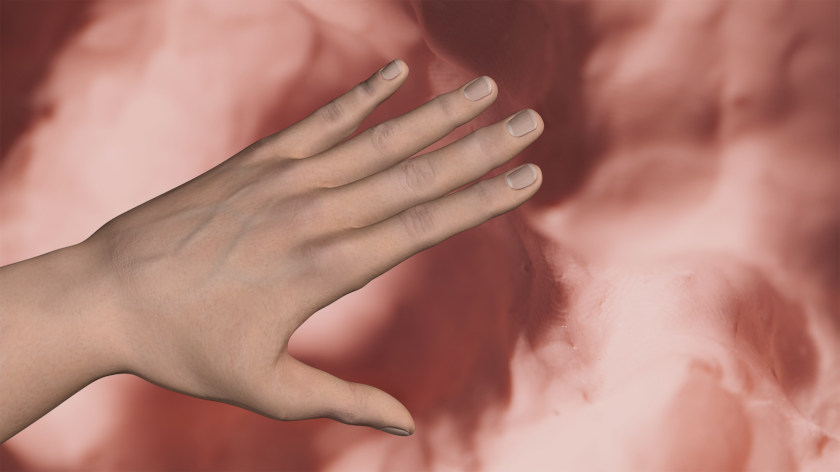
My Dear Lover
'My Dear Lover' is feminist in the way it presents vulnerability. Stutz notes: "I was very interested in the idea that it's a feminist strategy to expose yourself and show yourself vulnerable in public, but also to enable others to be vulnerable or expose themselves as well".
The film shares the same contrast between the personal touch of stop-motion and the CGI distance in her films, a topic that fascinates her due to the clash between the disembodiment of CGI and the physicality (or clumsiness) of claymation. But there are broader connotations here. Stop-motion, and especially claymation, is often associated with children, while technologically developed CGI is considered a highly advanced visual language - another dichotomy.
The contrast between the livable, tangible present and the highbrow technological abstraction is also the main theme in her third animation short 'For real, For real, For real this time', in which an older woman dances through a space in the middle of a server farm; together with a snail, covers it with a shiny layer of slime.
Inspired by cyberfeminism, the film explores the perceived idea of digital space as a male/ patriarchal imagination that doesn't require a body (everyone is the same), while, at the same time, this digital space excludes people, and more particularly FLINTA [Female, Lesbian, Intersex, Trans, Agender people] and their bodies.
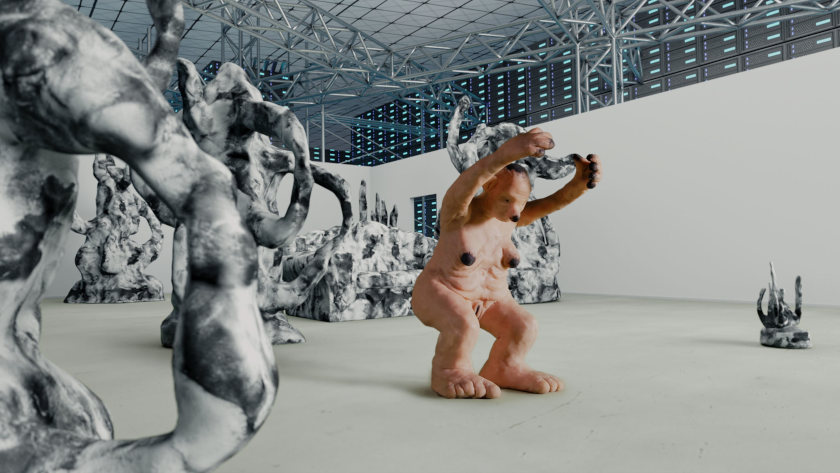
For Real, for Real, for Real this Time
Hence, the two key ideas of the film: the old woman dancing and the snail slime. Going against the grain of representing human beings as good-looking, young male/female bodies, the woman character is big, non-conventionally beautiful, naked, and henceforth very physical. Together with her snail friend/accomplice, they start occupying /disrupting/sliming up the whole space.
On the other hand, slime has its unique references. "I found out that the slime stands very much for the female genitals and the female body in general -something we associate with the human body and physicality. But slime is also used in high technology, for example, we need slime for screens. Of course, it's synthetic, not biological. But still, it uses the same structure as the physical structure to cool down servers".
These associations further foster the element of queerness in Stutz's work, which is more than an umbrella for gender identity and sexual orientation. It reveals an intersectional category that cuts across existing dichotomies, e.g., digital technology/physicality, higher/lower class, etc.
"Queerness for me is more a way of thinking or perceiving the world, and thinking about norms or social categories", she explains. Blurring the norms is also reflected in her character design: deformed noses and hands fill the screen in her films. This happens, for instance, in her latest live-action/CGI film 'Delay': the film explores the very traditional scene of two lovers' goodbye at the railway station, but a technical fault prevents the train from departing.
"In 'Delay', it was the first time I worked with actors and live-action film. However, I'm not interested in showing reality, but in imitating it.", Stutz explains. "I always want to deform the objects or the room, the spaces, and also the people a bit". Here, instead of trying to show a dichotomy between the abstract and the tangible, she actually tries to embrace it. "This is also a queer idea for me: not to have this dichotomy anymore, but to have a spectrum or to blur everything in these categories". And this goes hand in hand with Stutz's preference for "clumsiness" in the story as well, in which a very heterosexual (and conventional) standardized social script no longer works.
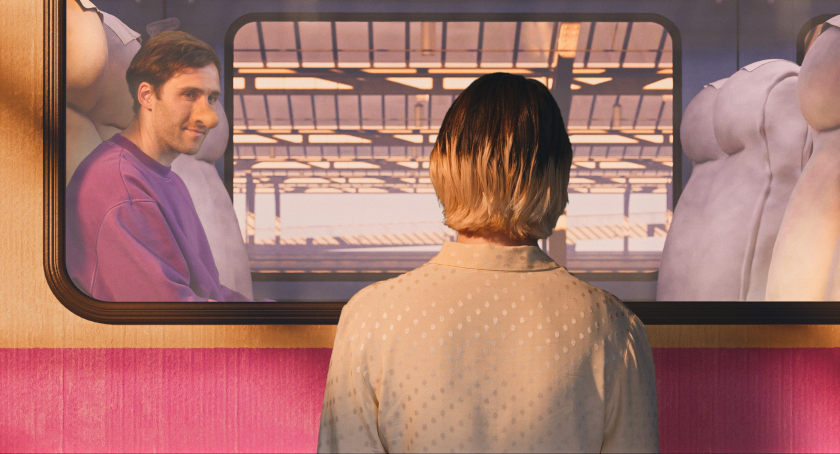
Delay
Working with a typically modest budget in her personal films, Stutz is very active in her exhibitions; check her personal page for updates. "As a fine artist, you need to be quite quick", she explains. "You have to produce a lot of work because you have a few shows yearly. But as a filmmaker, it's a bit different; maybe you work on one film for five or even more years. And I only work on a film for a maximum of two years. I also do other stuff, and it just works so differently, and I still try to find out how the best way to do it would be".
So far, it seems Milva Stutz is doing well, balancing both her animation and drawing/painting work in ways that both pinpoint and blur our usual perception of space, gender, and technology.
'My Dear Lover' will be part of the Swiss Women Animation programme (Swiss Focus) at the Stuttgart Festival of Animated Film (5-11 May 2025).
